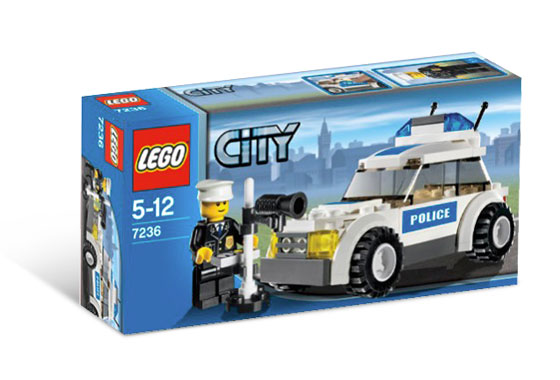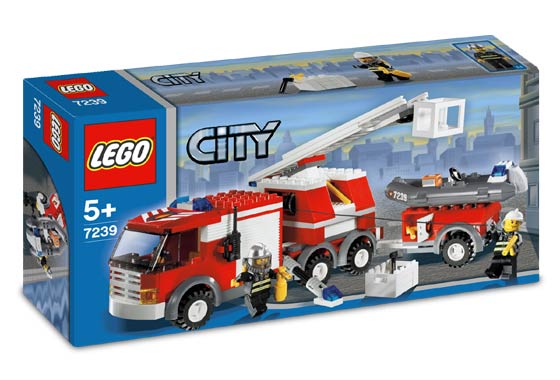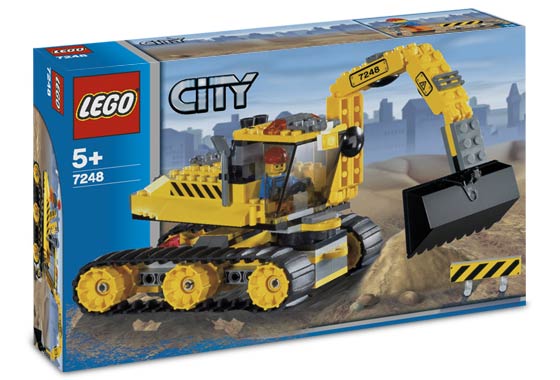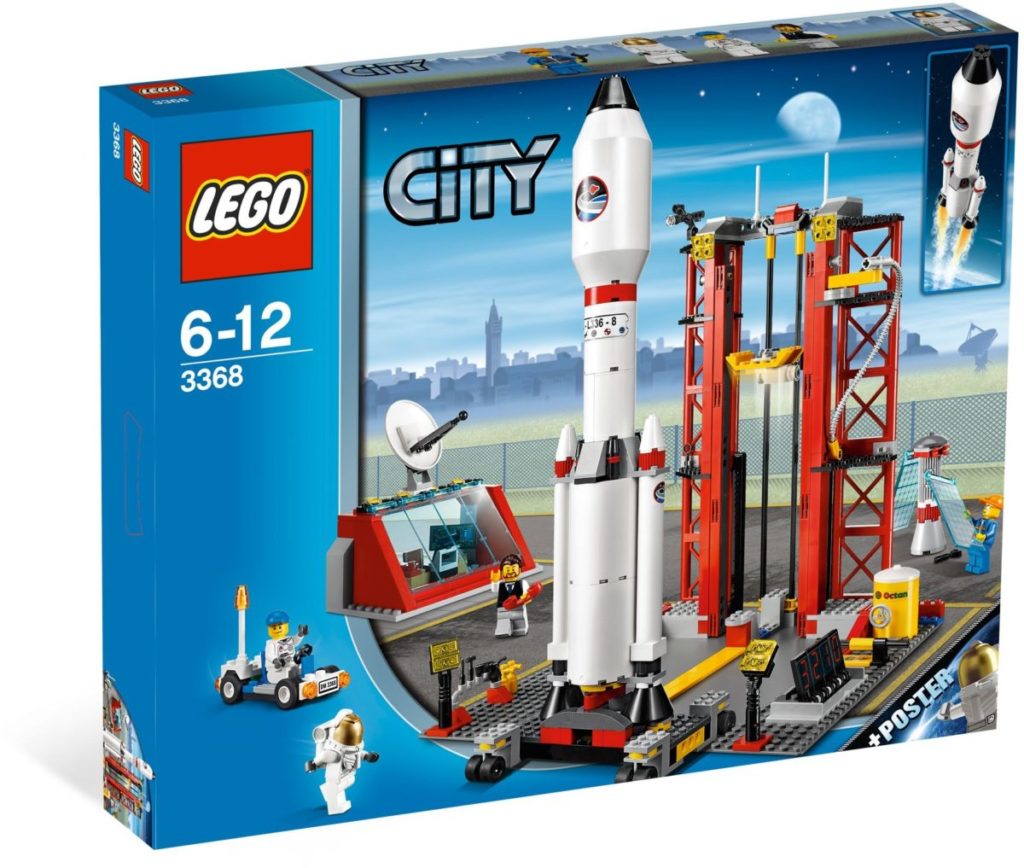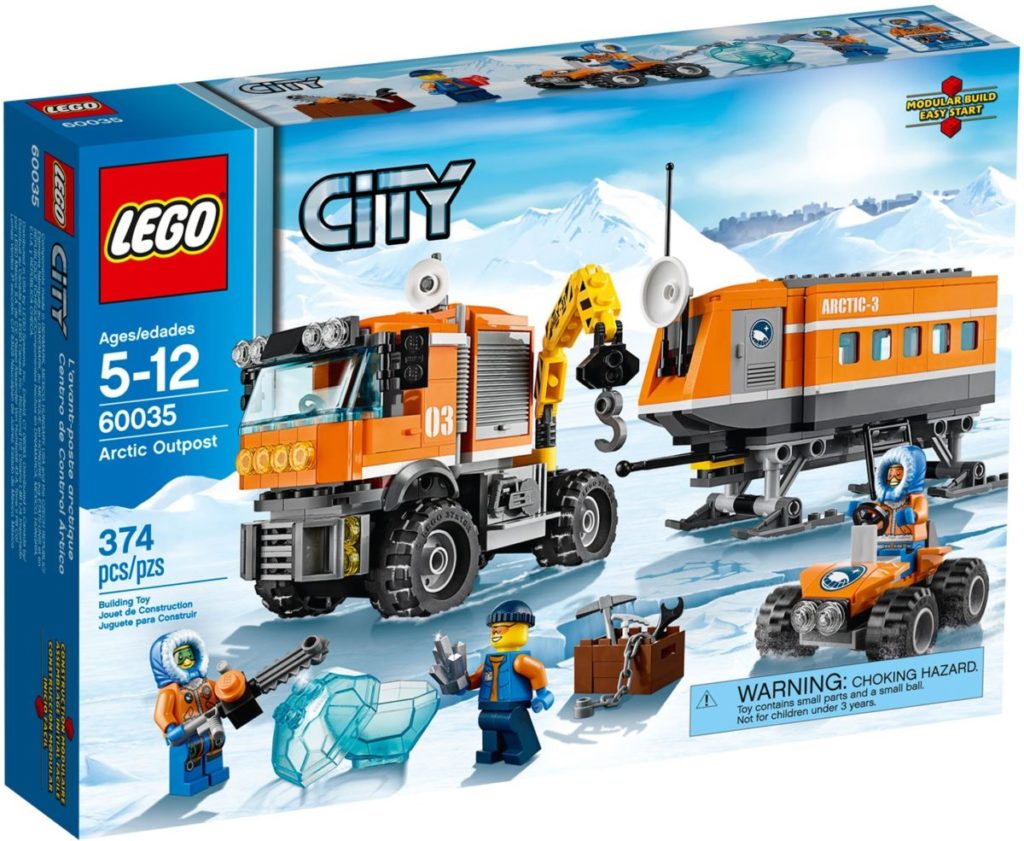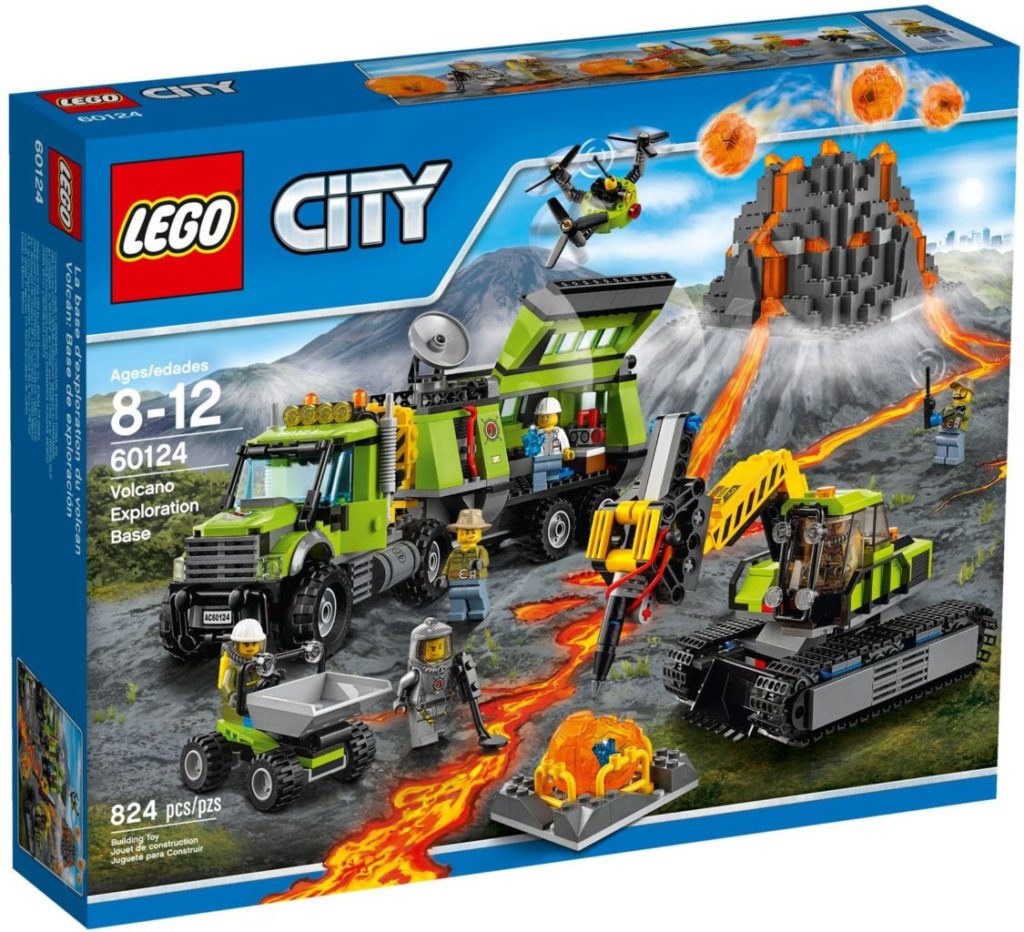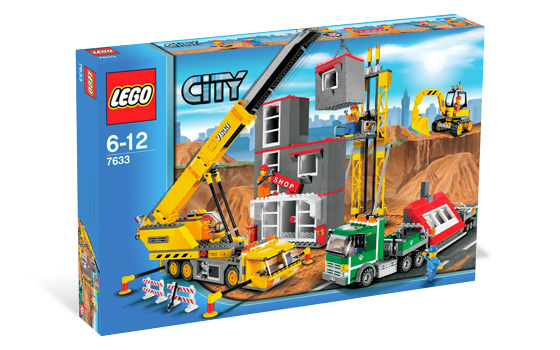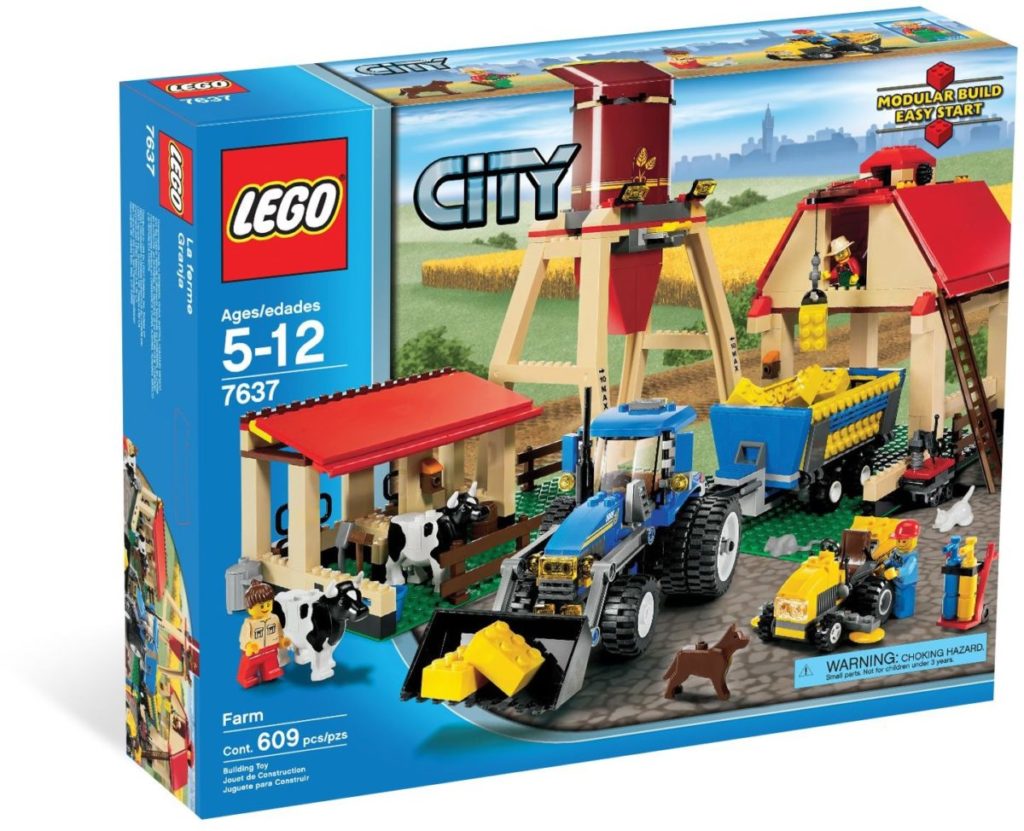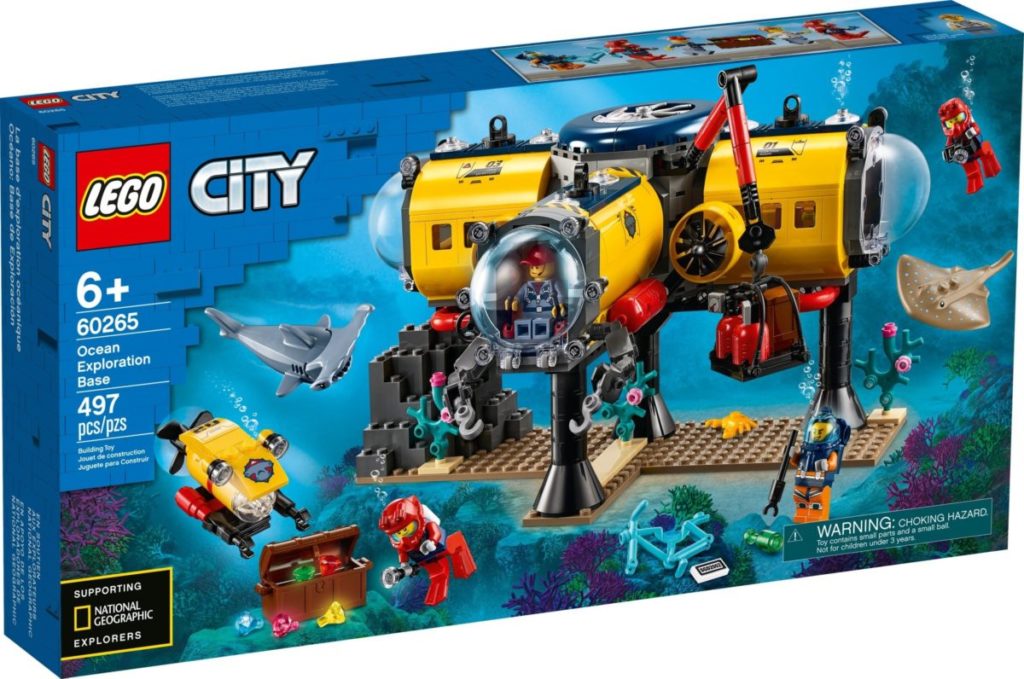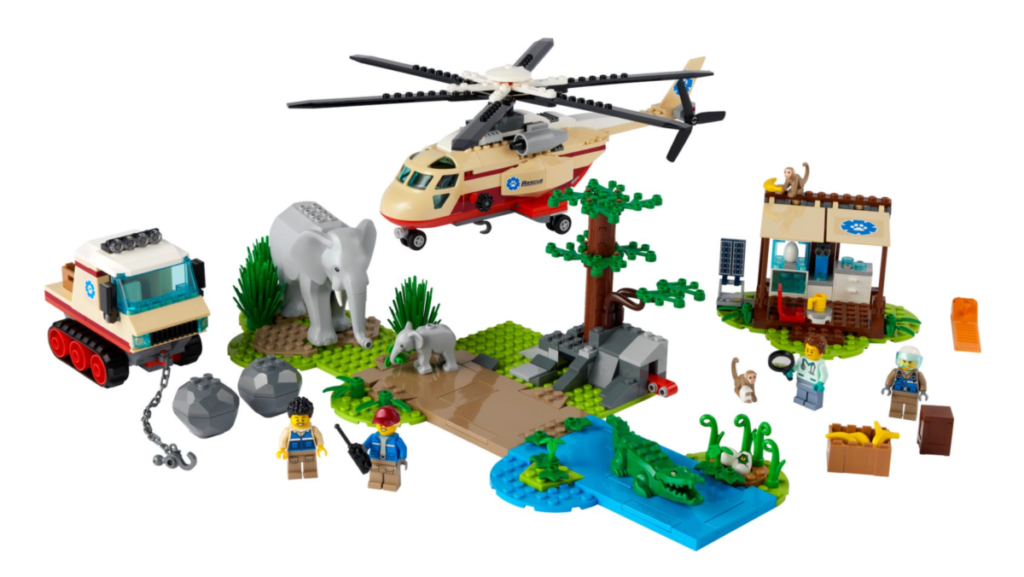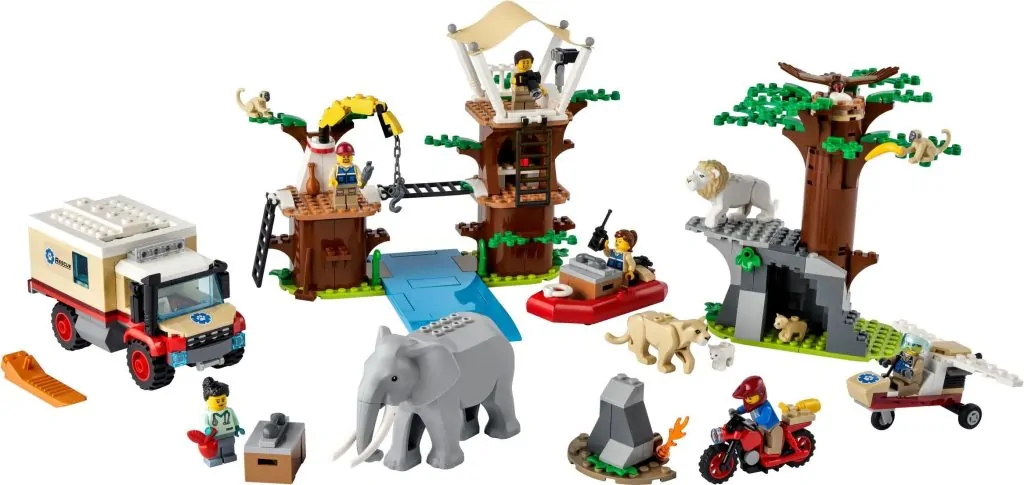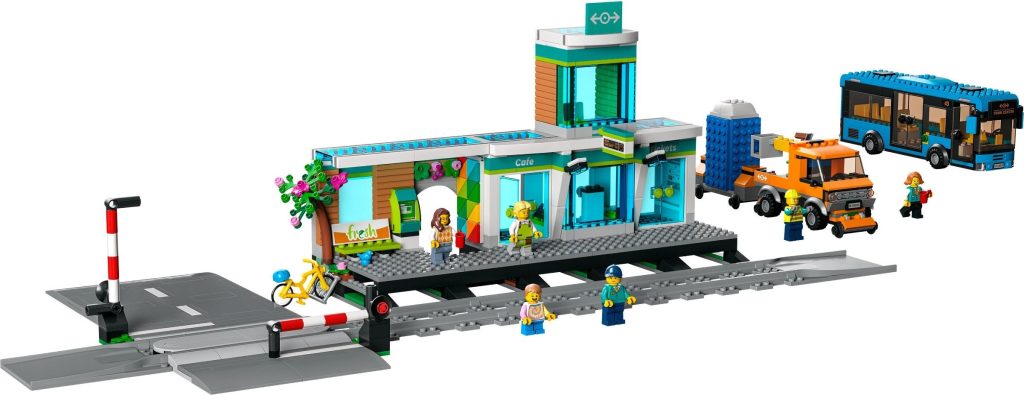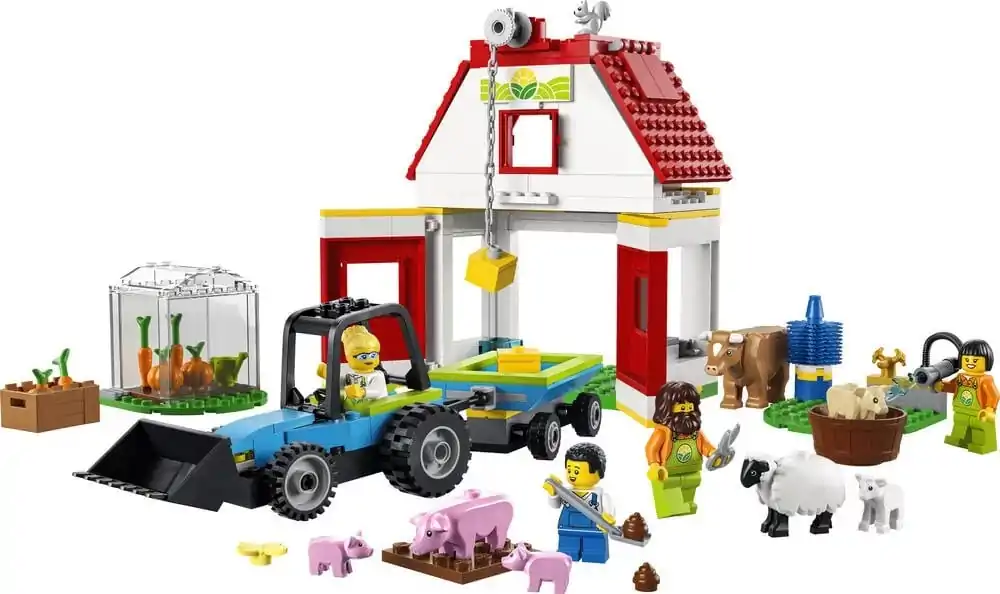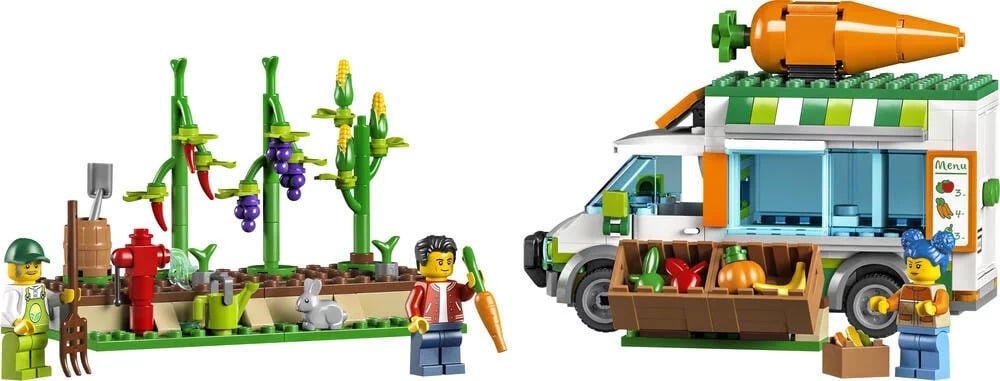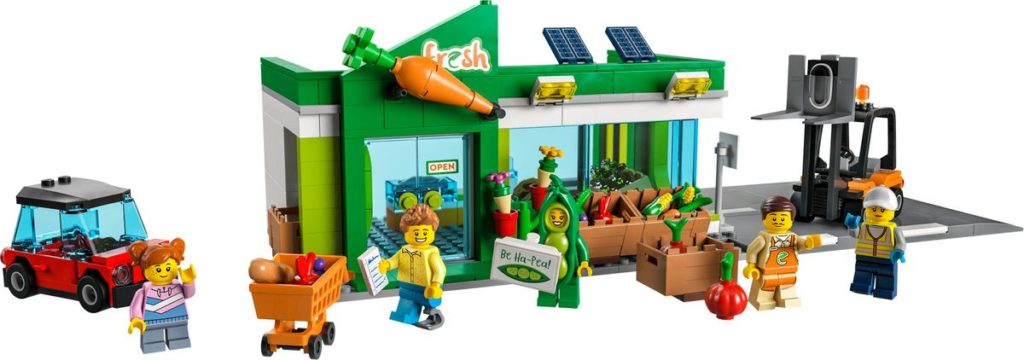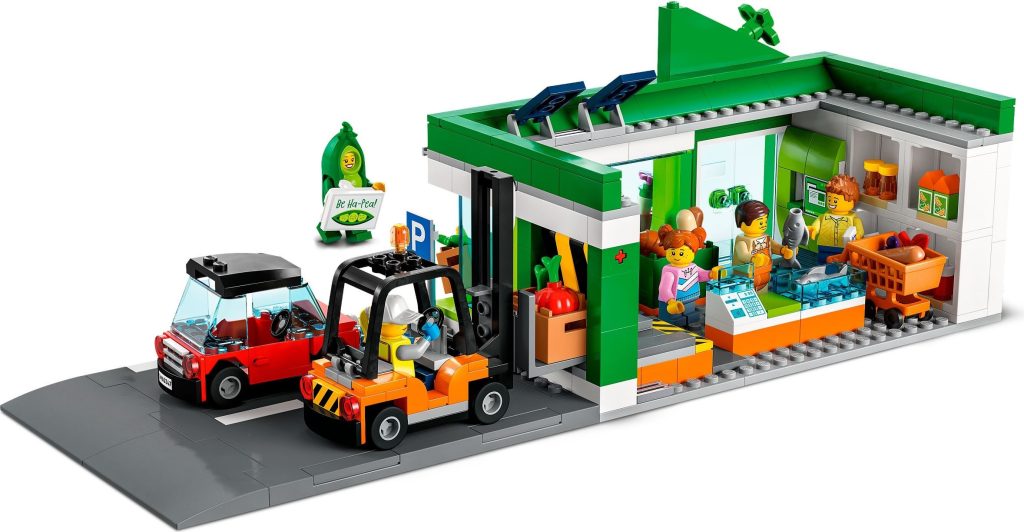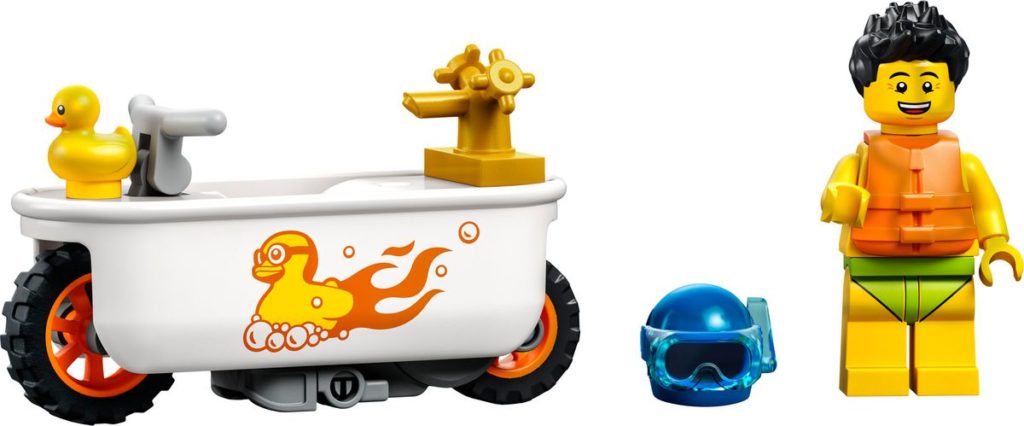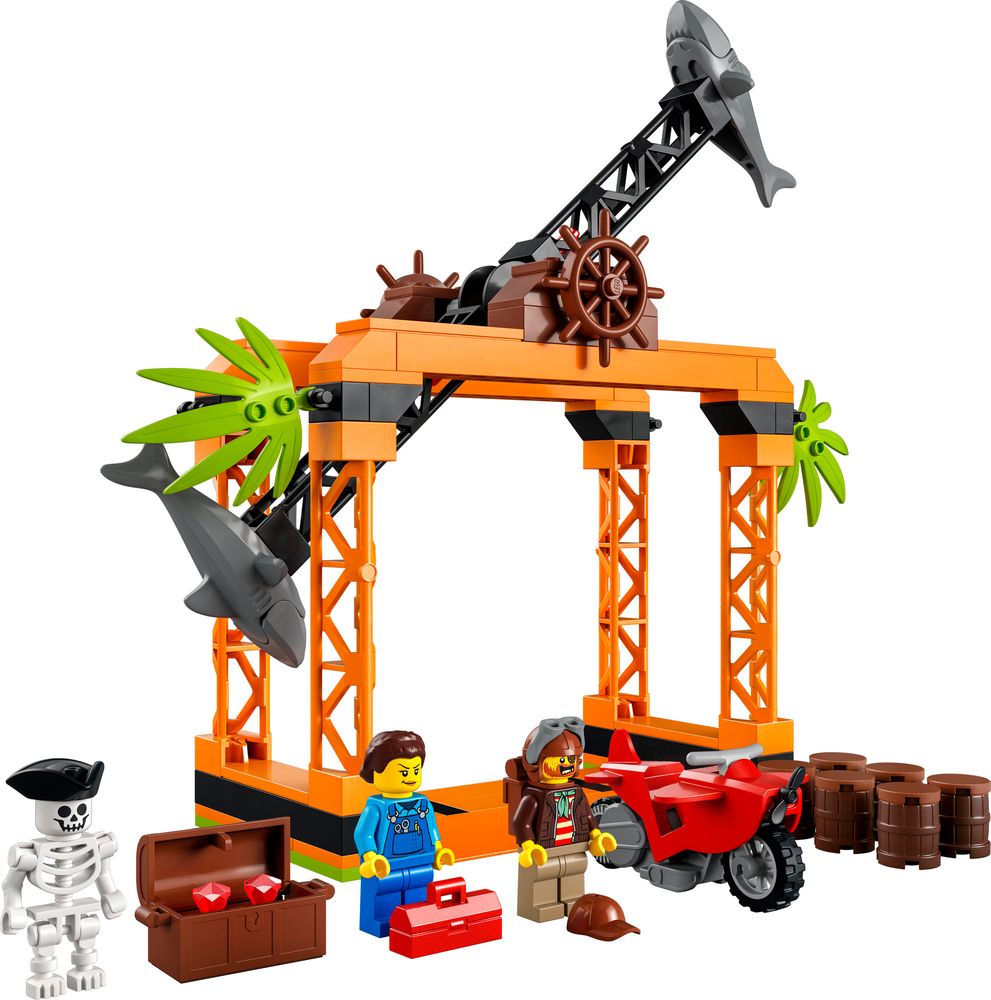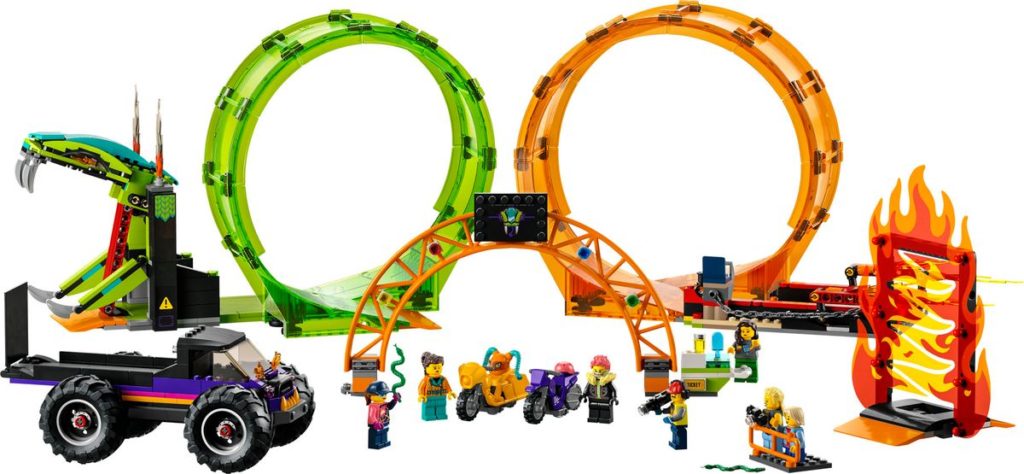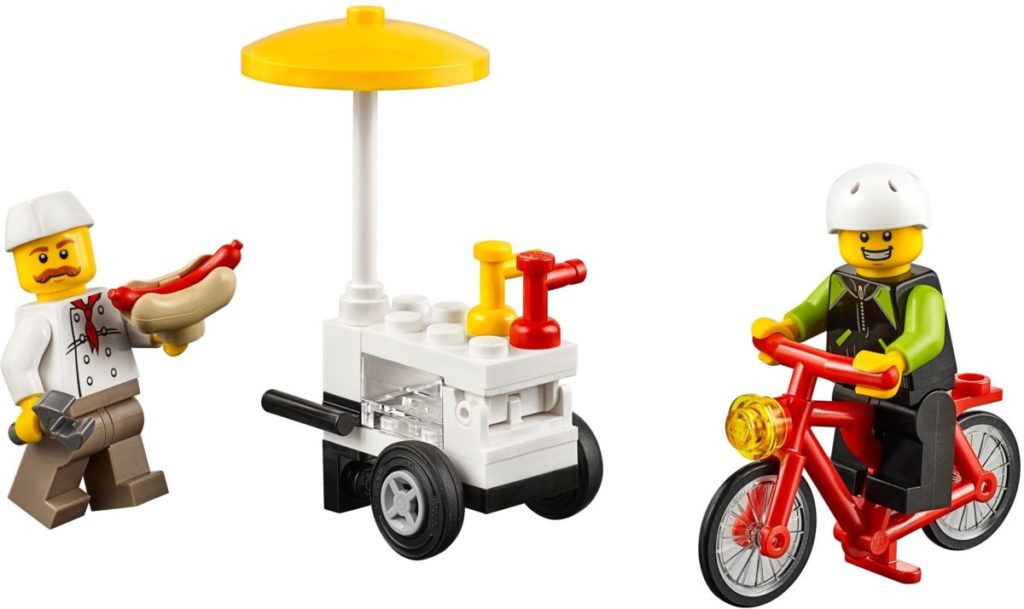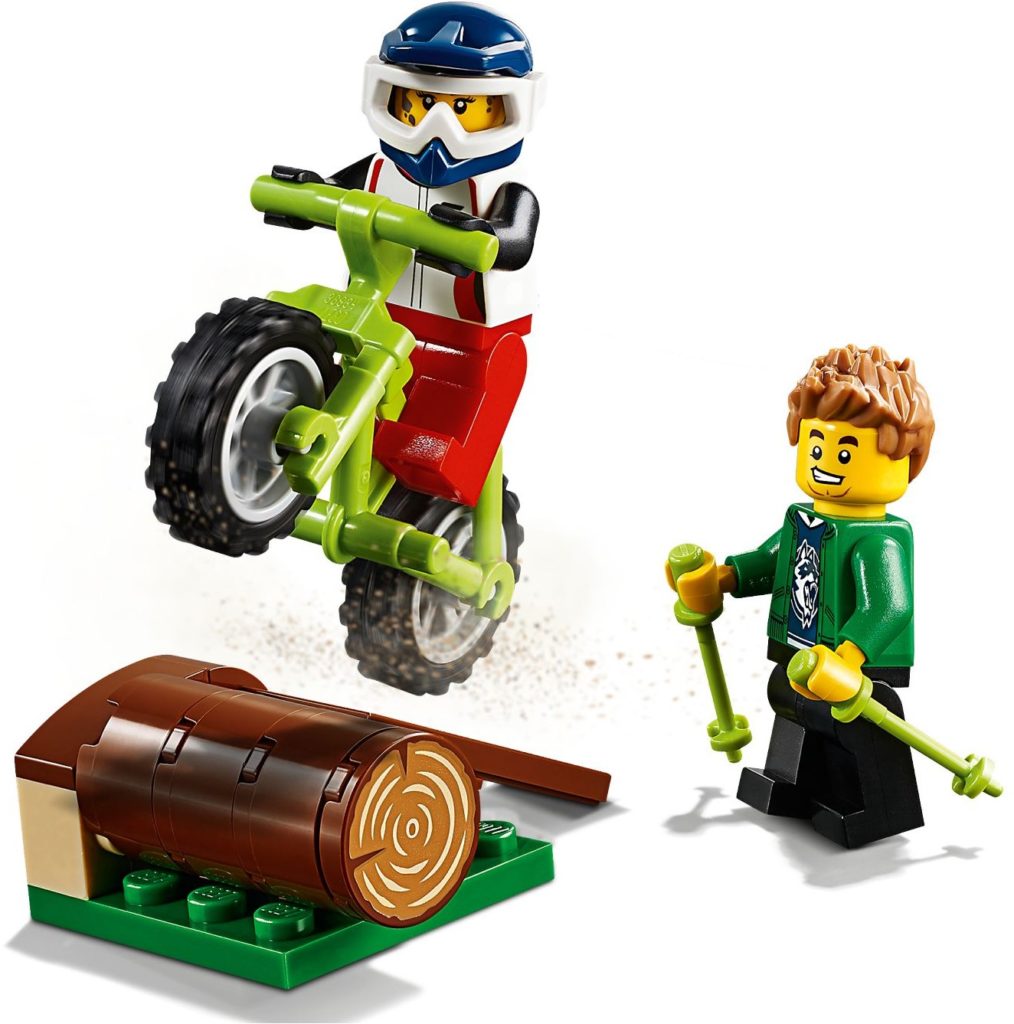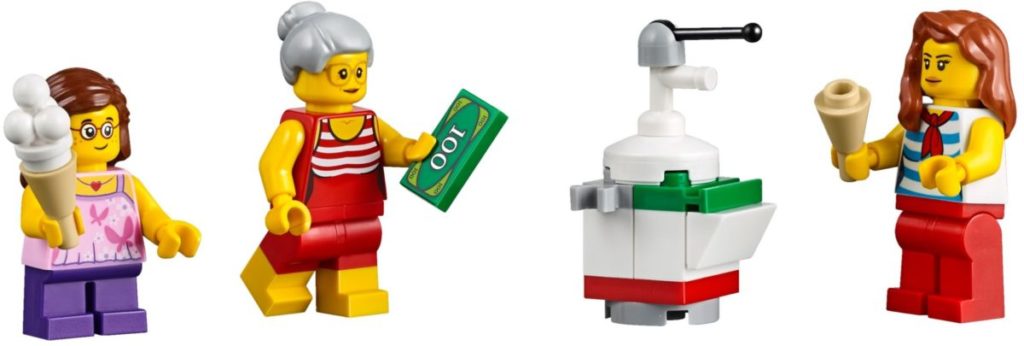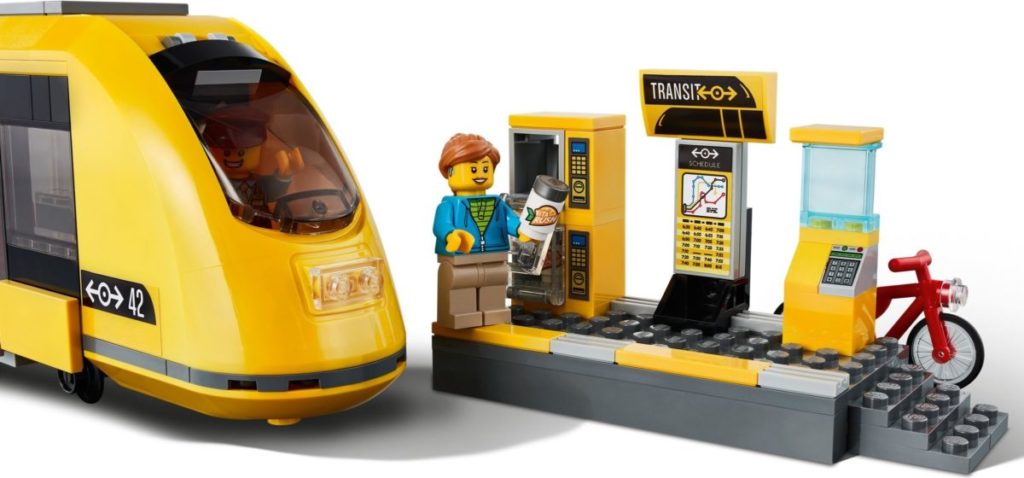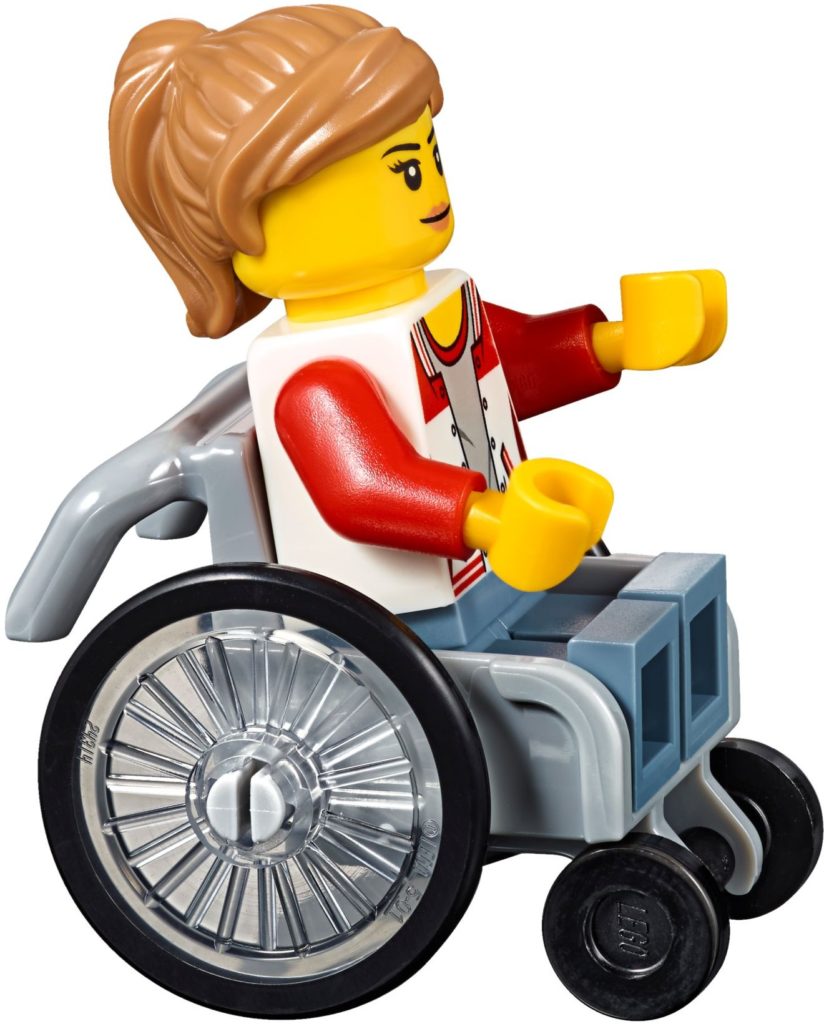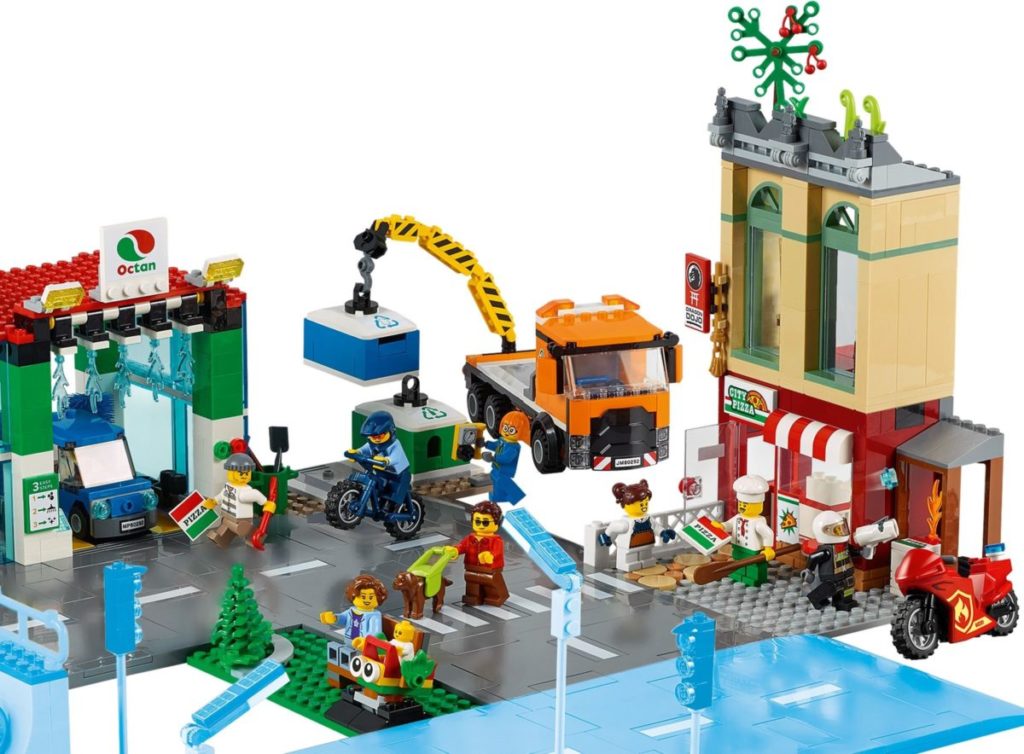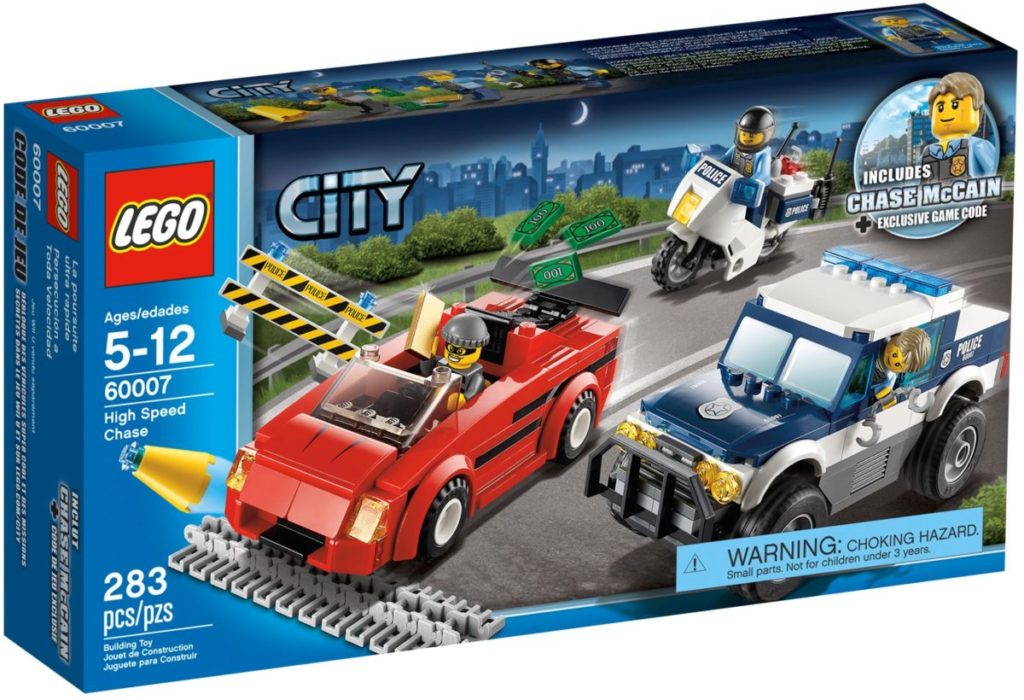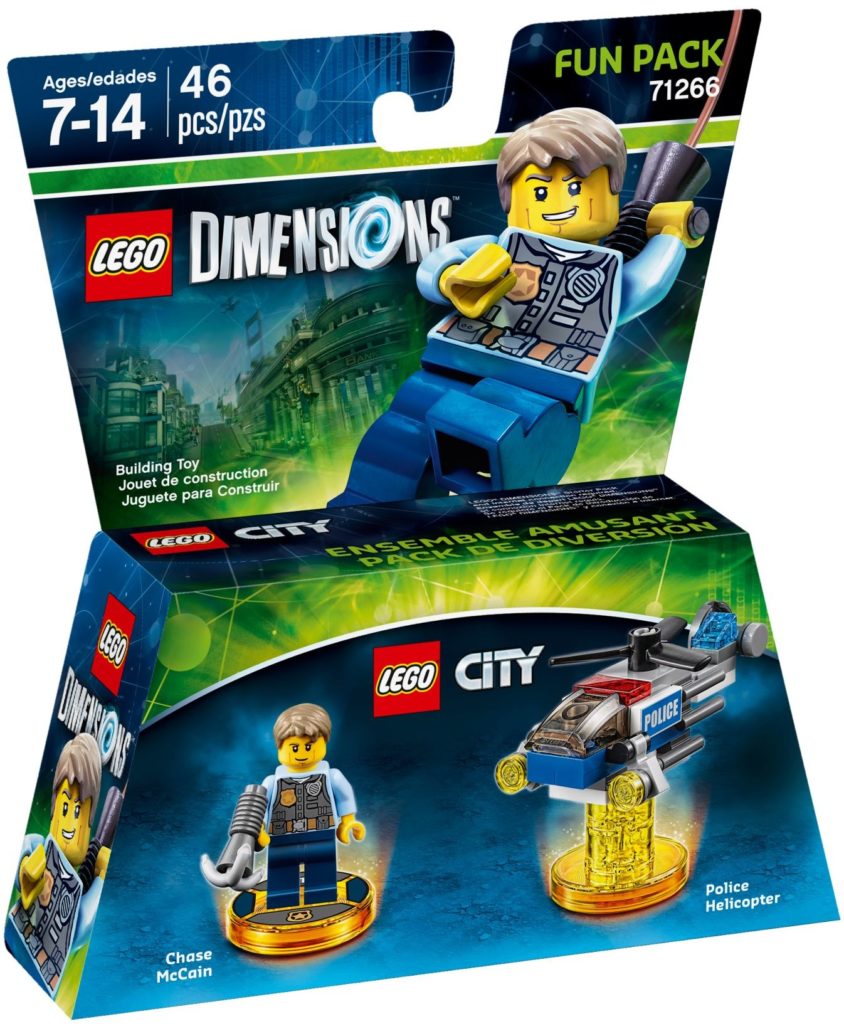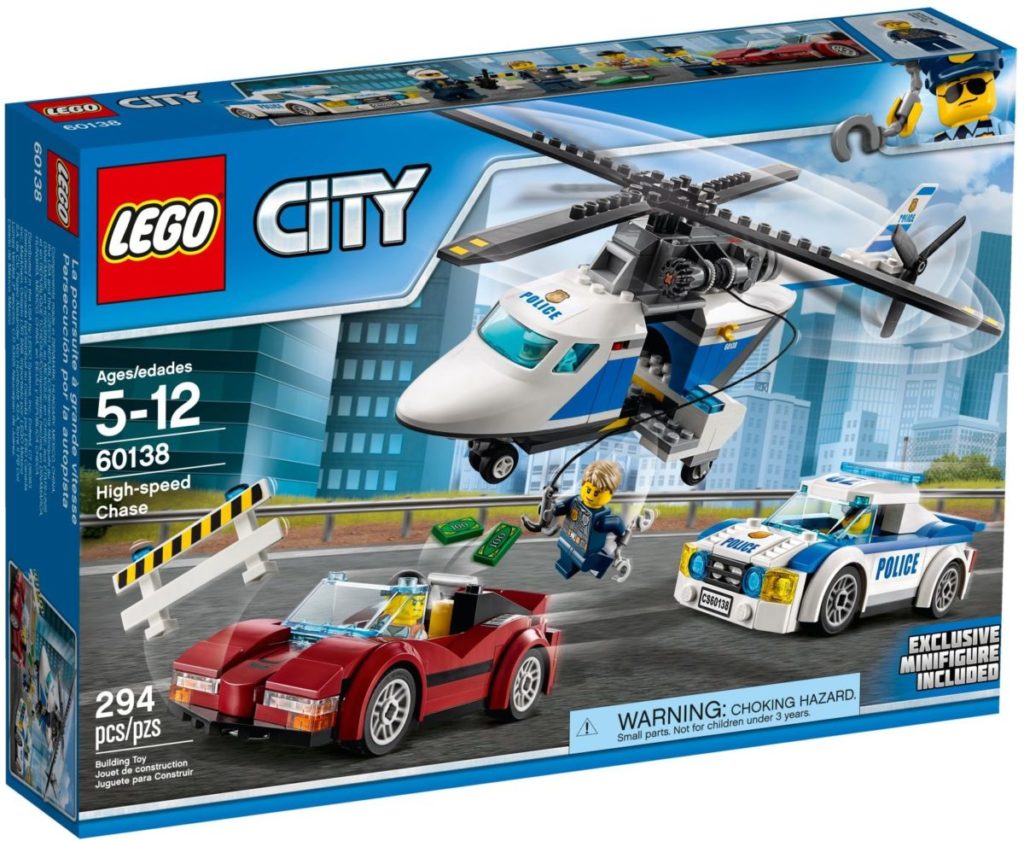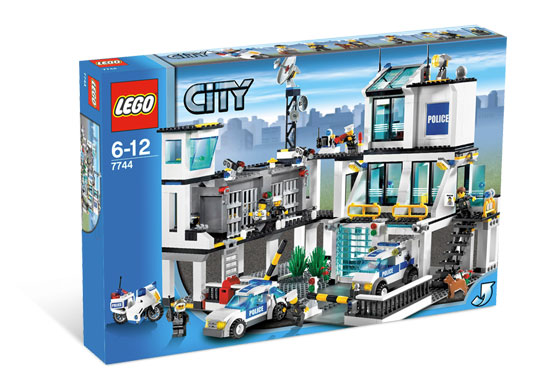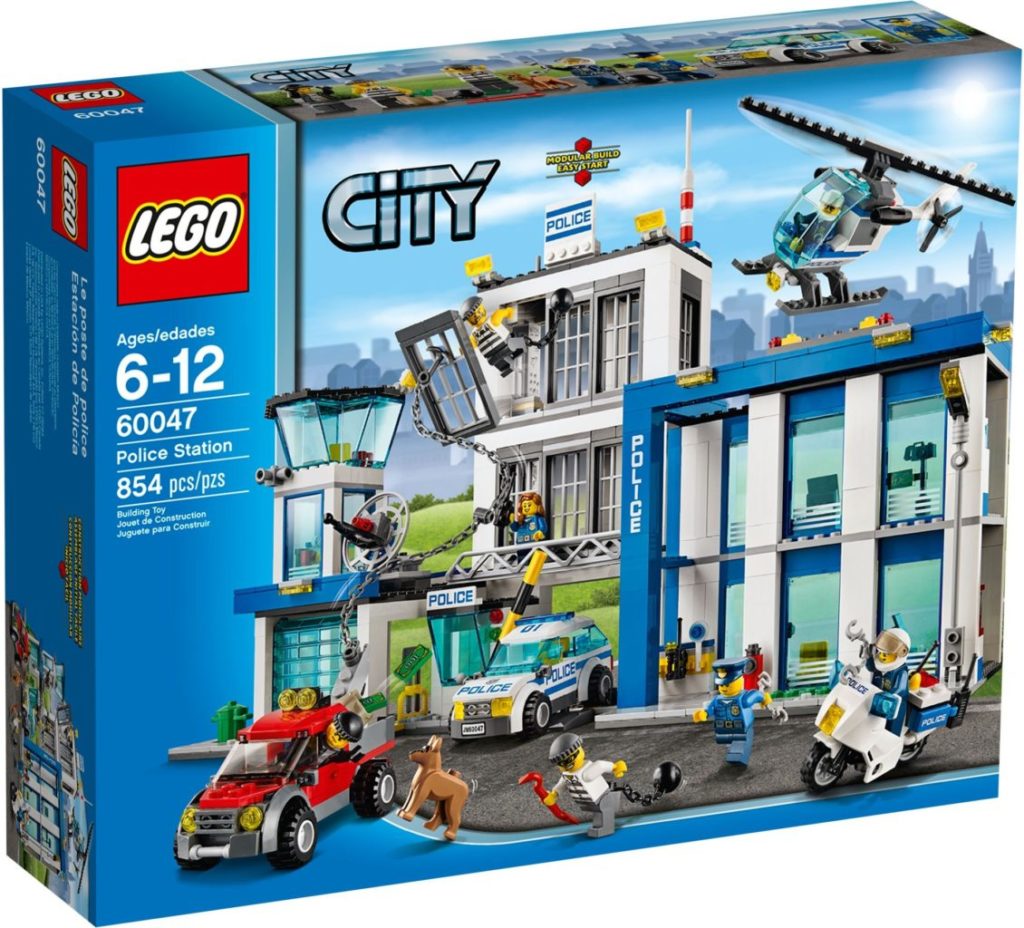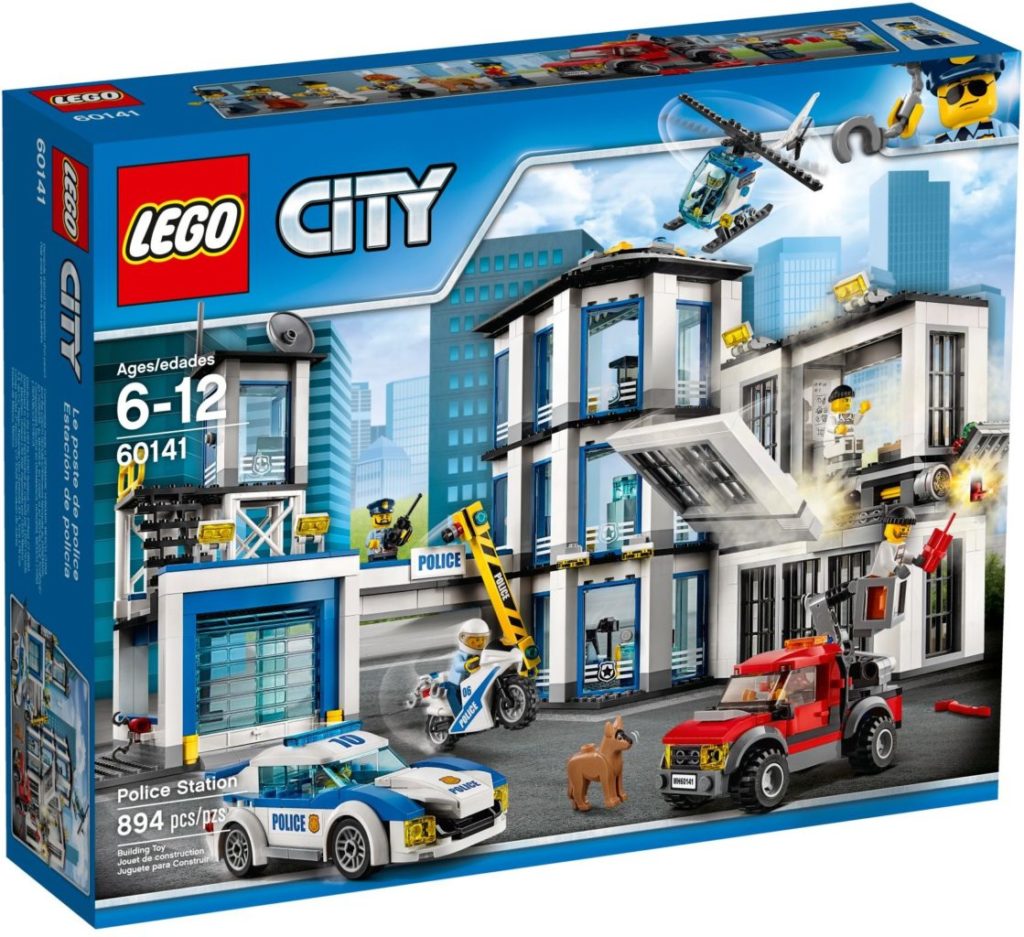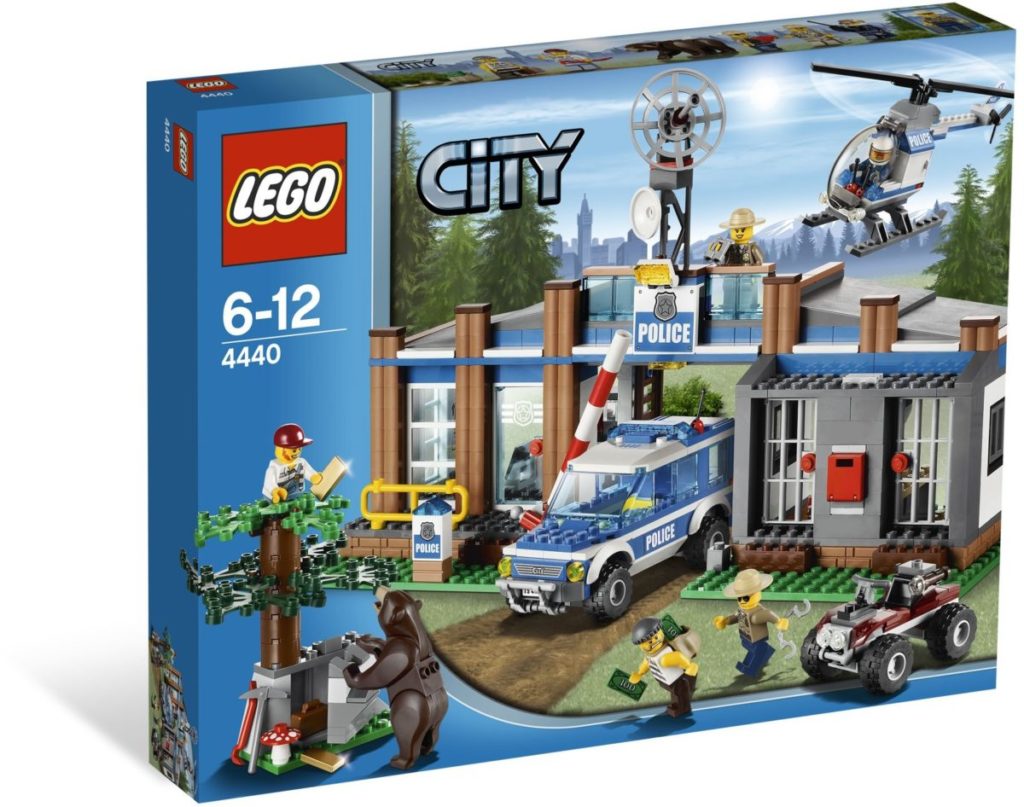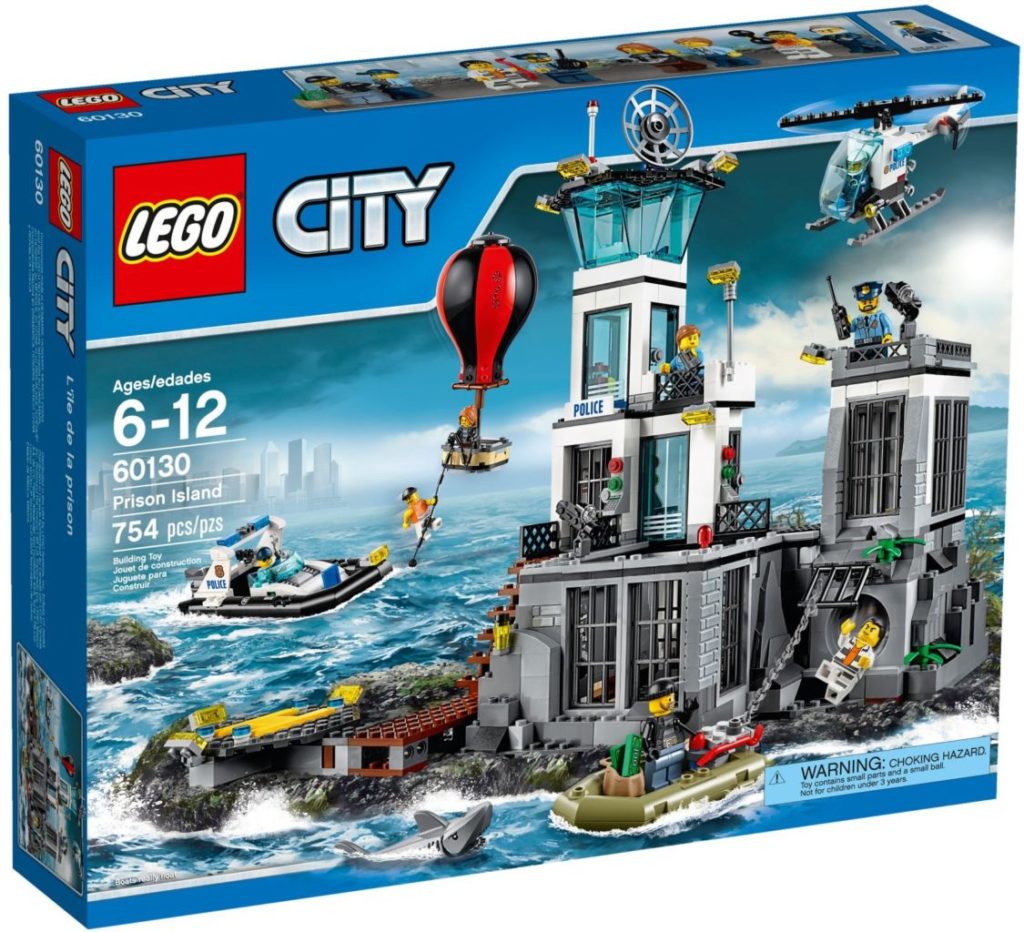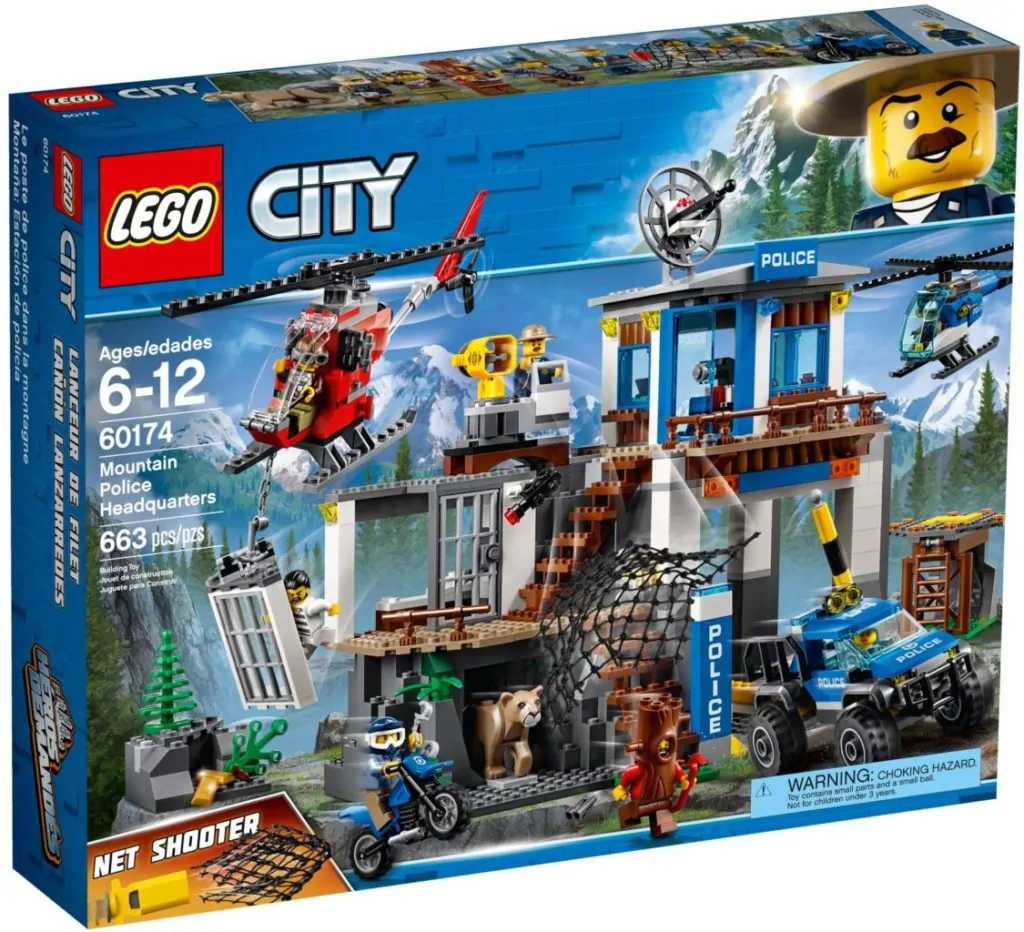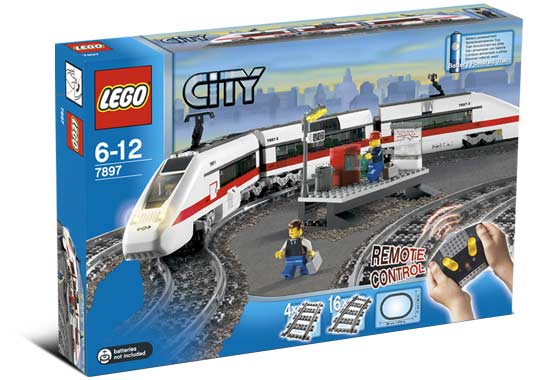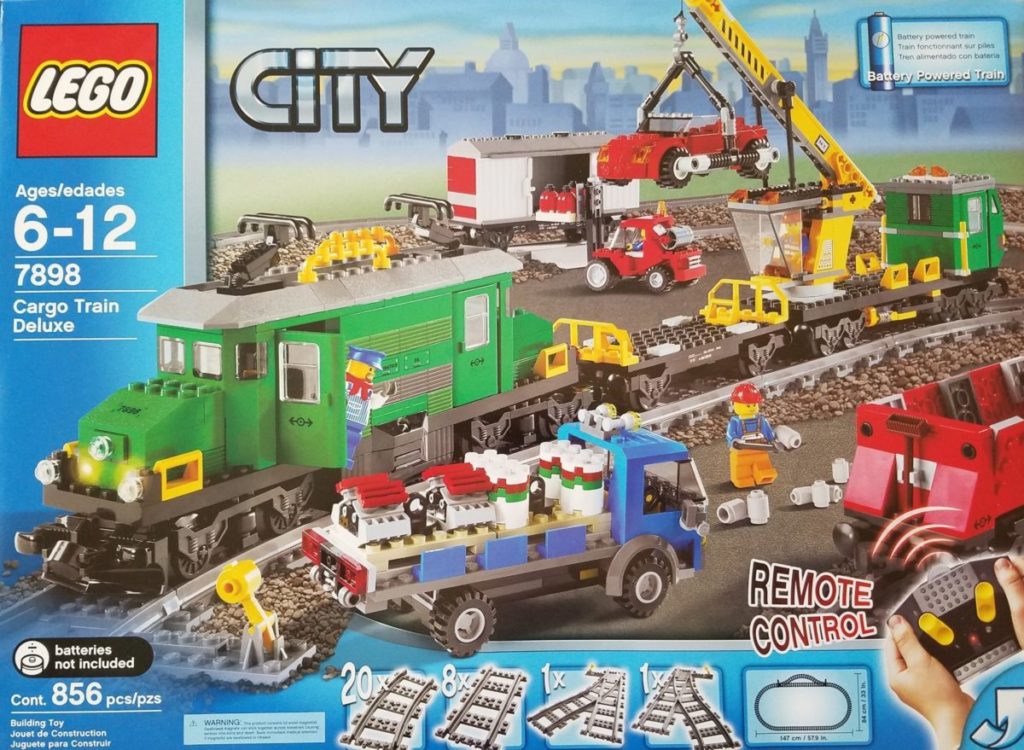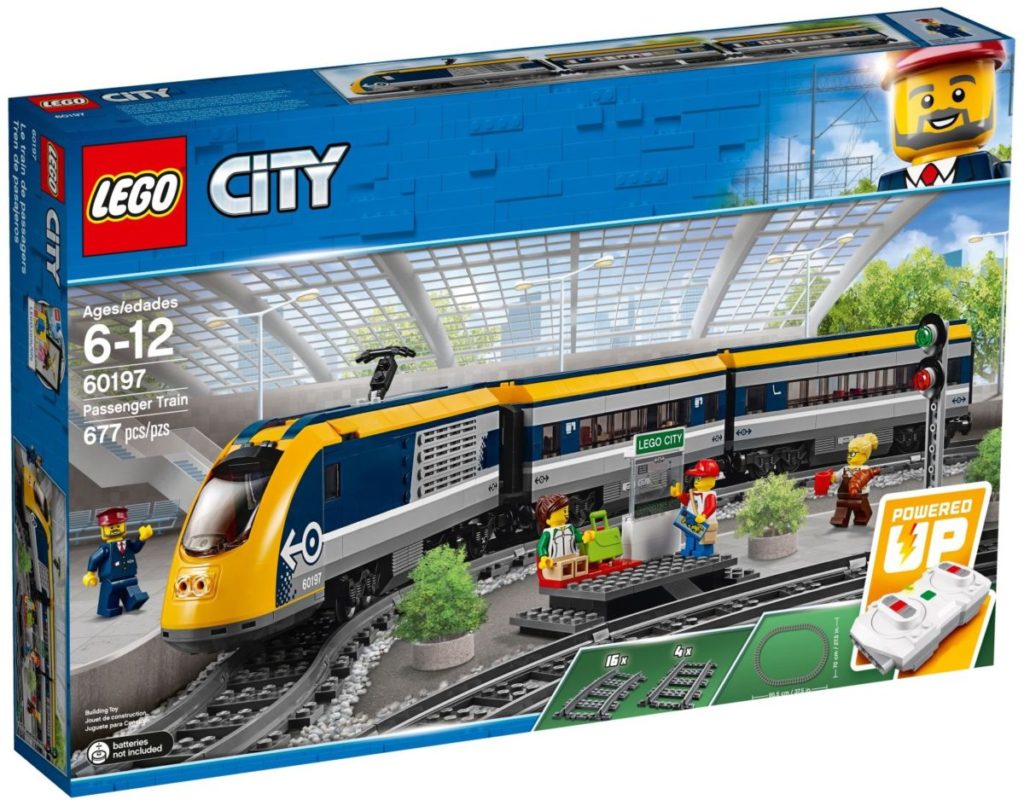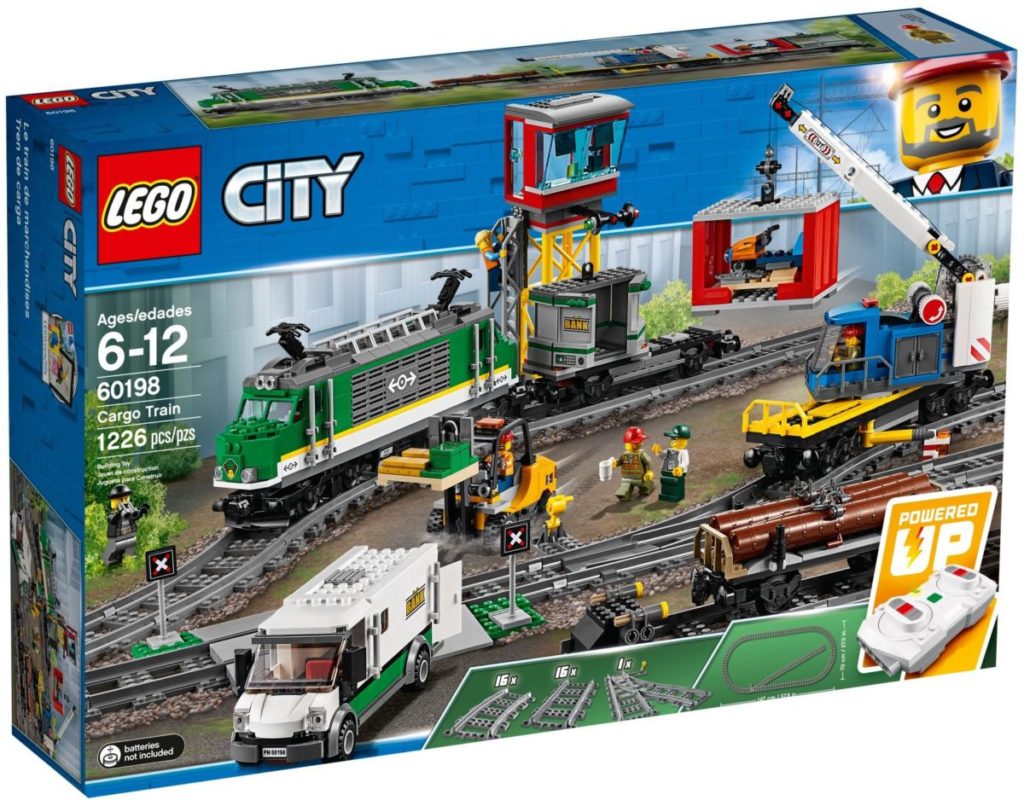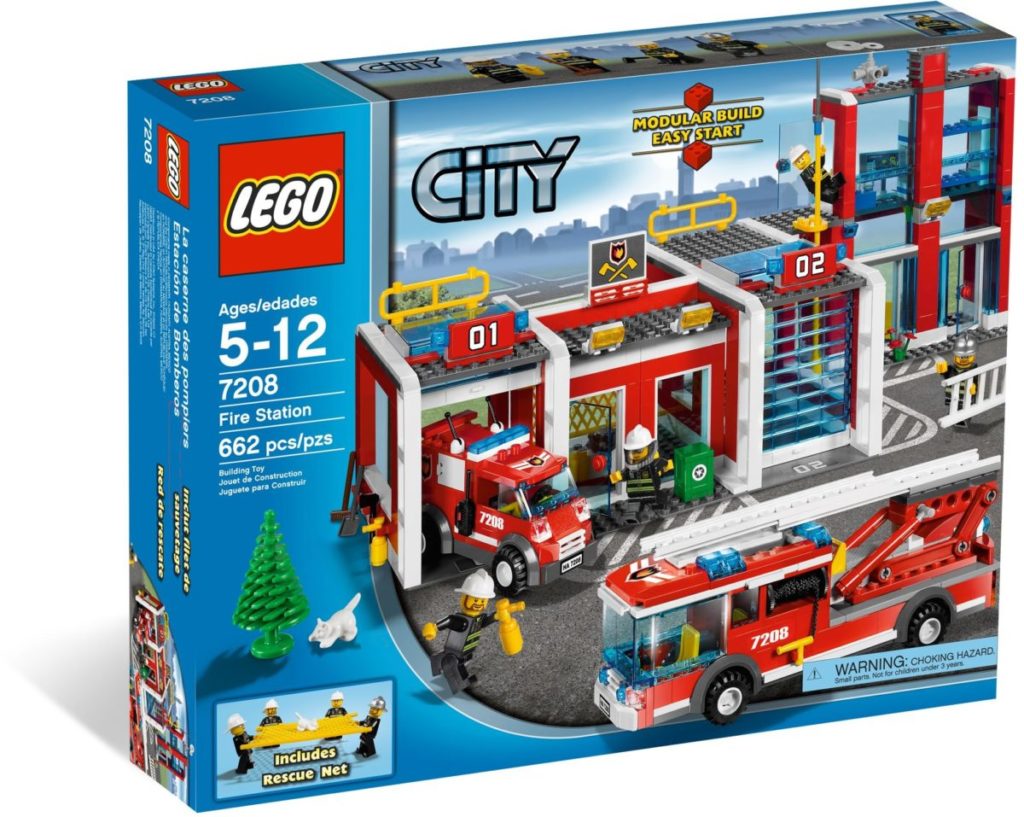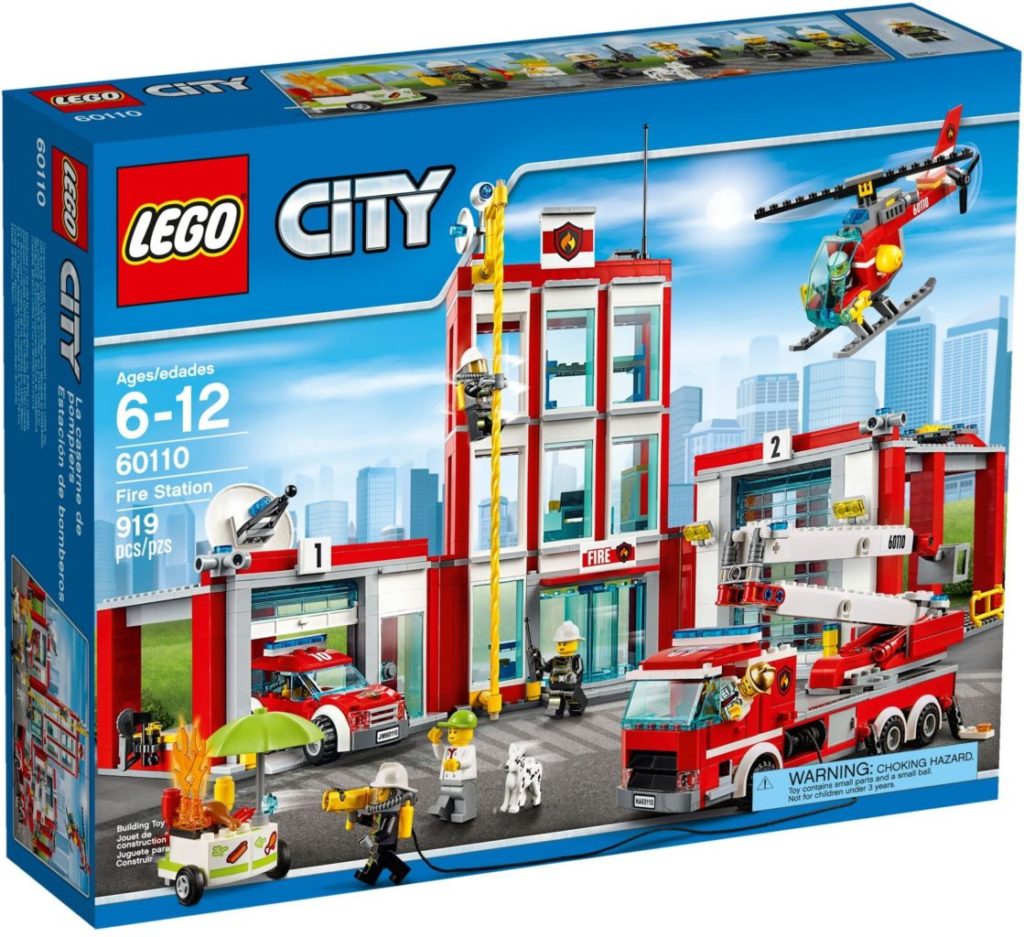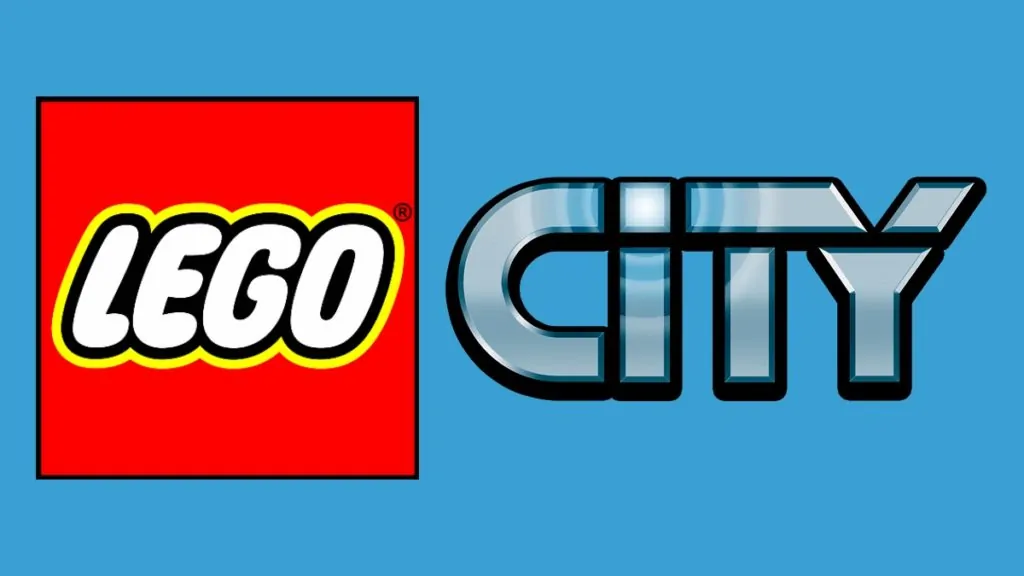
Since the earliest days of the LEGO brick, LEGO fans have been building the world on their doorstep. The 1950s saw the launch of numerous houses, garages and other buildings under the Town banner, which children could use to build sprawling metropolises of their own.
While the names might change over the years, generic town sets remain a key part of the LEGO Group’s product range. 2005 brought us its current iteration, LEGO CITY, which continues the lineage of the LEGO Group’s earlier models while expanding into exciting new territories.
Head over to LEGO.com to see LEGO CITY’s current crop of models, which lets today’s builders push back the boundaries of their world further than ever.
LEGO CITY history
The LEGO CITY range first debuted in 2005 after a tumultuous time for the LEGO Group. Recent experiments like Galidor and Jack Stone had pulled the company away from the play experience it was known for, with simpler models and limited customisation. The World CITY brand (launched in 2003) would go some way to fixing this, but it was rather short-lived; it lasted two years and offered just 38 sets during its lifespan.
CITY, then, was a back-to-basics range that would help return the LEGO Group to its roots. The early CITY sets debuted in 2005 and included familiar staples like police stations, fire engines and construction vehicles. It also launched updated road plates that would allow children to build CITY streets more easily.
For much of its early history, LEGO CITY riffed upon the sets and themes that had preceded it. This made sense, given that fire engines, diggers, garbage trucks and police cars have a timeless appeal. Despite its young audience, the models continued to offer more sophisticated building techniques, leaving the overt juniorisation of the late ‘90s far behind.
As the range moved into the 2010s, LEGO CITY began to push past the old boundaries of its CITY streets. 2011 saw a new range of space sets for budding astronauts, as well as a new harbour for the nautically-minded. 2012 and 2013 brought CITY fans into forests and museums. 2014 returned us to the Arctic – an area the LEGO Group hadn’t explicitly explored since the turn of the century. Other new environments – like swamps, mountains and even volcanoes – followed in the years to come, giving fans exciting new places to explore.
While CITY might prove a misnomer for today’s models, the LEGO CITY range has proven to be both flexible and resilient. Expect it to remain a fixture of the LEGO Group’s range for a long time to come.
LEGO CITY sets
By necessity, the LEGO CITY range sees an awful lot of repetition in its product range. Certain models like police and fire stations (and accompanying vehicles) are beloved across multiple generations, as are individual cars, boats, buildings and other civilian items. More than 700 models have been released in the range’s history, with plenty of new ones released every year.
The expanding range has allowed LEGO fans to build more realistic cities, rather than mere clusters of emergency services. Models like 7633 Construction Site, 7641 CITY Corner and 8403 CITY House provided places for the CITY’s populace to live and shop, while 7747 Wind Turbine Transport brought renewable energy to CITY for the first time.
Ironically, LEGO CITY is perhaps most interesting when it steps outside the city altogether. Predecessors to CITY have allowed us to explore remote environs, like outer space and the bottom of the sea. CITY continued this trend to great effect, but also took us to places we’d only sporadically visited in LEGO before.
2009 and 2010 introduced a collection of farm sets, offering children tractors, barns and a selection of animals (including the first minifigure-scale pig). Other locales like volcanoes and jungles, meanwhile, encouraged inquisitive minds to get to grips with the outside world. That idea was pursued more explicitly with 60265 Ocean Exploration Base. This undersea set enjoyed endorsement by National Geographic, and made reference to ocean pollution with its part selection.
Recent LEGO CITY sets have been similarly interesting. In 2021 the Wildlife Rescue sub theme appeared on shelves, offering a slice of African savannah in LEGO form. While all of these sets are compelling, 60302 Wildlife Rescue Operation and 60307 Wildlife Rescue Camp are the strongest sets here. Each comes with a variety of animals and a slice of savannah terrain, including trees and bodies of water.
Summer 2022 has also provided us with plenty of attractive sets, even if most aren’t really original. 60336 Express Passenger Train and 60336 Freight Train offer new twists on old concepts. Ironically, though, 60335 Train Station may be more compelling to some LEGO fans. It offers a substantial building for LEGO minifigures to wait at, and includes secondary models like a bus and a rail-ready cherry picker.
When your minifigures are hungry, they can pay a visit to new sets in the Farm sub theme. 60344 Chicken Henhouse offers a small building for chickens to lay their eggs safely, and includes a small quad bike with built in steering. 60345 Farmers Market Van, meanwhile, includes a small vegetable patch with new corn elements. You can even ‘water’ the carrots and see them sprout.
The main event here is 60346 Barn & Farm Animals, although it’s pitched at a young audience. This means that key parts of the set (like its barn and tractor) may be a bit too simple for older LEGO fans.
However, other elements of the set could lure them back again. A greenhouse (filled with vegetables) is included in the set, as is a quartet of farm workers. There’s also several farm animals included, along with a sheep you can actually shear.
If you prefer to get your plastic food in an urban centre, 60347 Grocery Store is a very exciting model. This model depicts a small shop where minifigures can buy fruits, vegetables, fish and other groceries. To facilitate this a shopping trolley is included, as well as a cargo bay for fresh deliveries.
Other points of interest in the model include a forklift, a store employee in a pea pod costume (which returns from the Collectible Minifigures line) and a customer with a prosthetic leg. This is a new element in the LEGO range, and reflects the growing depiction of people with disabilities in LEGO sets.
Several exciting new sets have joined the Stuntz sub theme in this period. This product collection actually launched in 2021, and includes a brand new motorcycle design. Each one comes with a built-in flywheel; when revved up, it allows the bike to move an impressive distance under its own power.
On the cheaper end of the scale, sets like 60331 Touring Stunt Bike and 60332 Reckless Scorpion Stunt Bike offer pocket money thrills. That said, 60333 Bathtub Stunt Bike may be more appealing thanks to its offbeat design.
More substantial Stuntz sets include 60342 The Shark Attack Stunt Challenge (which adds some pirate-theming to your stunt shows) and 60339 Double Loop Stunt Arena. This exciting model includes two bikes, a pair of loops and even a wall of flames to burst through. However – with a price point in the triple digits – you may need to perform some mental gymnastics to justify the purchase.
LEGO CITY minifigures
LEGO CITY minifigures are an essential component of the broader CITY range – what’s a CITY without people to populate it? Most of the minifigures are generic, supplied without names or fixed identities. This has obvious benefits, allowing them to be used and interpreted however their audience desires.
Since minifigures are so useful for play, it’s unsurprising LEGO CITY has made it easier to acquire them. In 2016 LEGO CITY released its first People Pack, a set focused on minifigures rather than large, complex builds. 60134 Fun in the Park – City People Pack offered a simple park setting and 14 minifigures, with a diverse cross-section of ages, genders and occupations. Later packs like 60153 People Pack – Fun at the Beach, 60202 People Pack – Outdoor Adventures and 60230 People Pack – Space Research and Development would bring minifigures to the beach, the mountains and (with a little training) even outer space.
Changing fashions and technologies are well represented in LEGO CITY’s populace. Updated hairstyles and clothing have been steadily introduced, as well as bold new technologies like the selfie stick. However, LEGO CITY has also started introducing minifigures with disabilities, in a necessary step forward for representation in today’s toys.
The first people pack introduced the minifigure-scale wheelchair, which has seen repeat appearances in models like 60154 Bus Station and 60290 Skate Park. Other disabilities have been presented more subtly. 60271 Main Square gave us a minifigure with a hearing aid, while 60292 Town Centre introduced the first blind minifigure outside a licensed theme (complete with seeing-eye dog).
If a key selling point of LEGO CITY is that it helps children recreate their surroundings, LEGO CITY certainly seems to be on the right track.
LEGO CITY Undercover
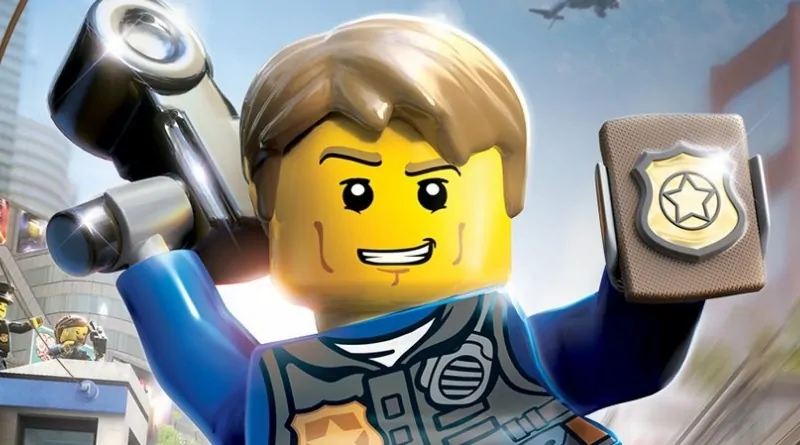
The LEGO Group has a long and storied history with video games, but for some time, it shied away from exploring its own themes within them. LEGO Star Wars: The Video Game established a new formula for LEGO games, which would be explored through whichever licensed themes were popular at the time.
LEGO CITY Undercover, released in 2013, changed that. Focusing on new character Chase McCain, players would join the undercover police officer on a mission to catch archenemy Rex Fury. It continued to preserve the formula of its predecessors – fixed-perspective story levels married with open-world puzzle-platform gameplay, and plenty of slapstick humour for fans to enjoy – but was also able to lean into the LEGO-ness of its world a bit more.
Chase McCain can take on a wide variety of personas to solve puzzles, like an astronaut and a firefighter. Undercover also introduced Super Builds – large, brick-built structures that help to expand the game world.
While the game launched as a Wii U exclusive, the console’s relative failure meant it didn’t stay there for long. A rejigged port appeared on PC, PS4, Xbox One and Switch, adding co-operative play – a conspicuous missing feature from the original release.
LEGO CITY Undercover also differed from its predecessors by offering physical toys for its main character. While older LEGO games drew inspiration from its own themes, many game-exclusive characters wouldn’t get physical minifigures for years – if ever. Chase McCain would go on to appear in three CITY sets, and even popped up in LEGO Dimensions – complete with his costume-swapping abilities.
LEGO CITY Police Station
The LEGO CITY police station has been a staple of the range since the beginning. It’s not hard to see why; police sets are a fixture thanks to the numerous role-playing scenarios they offer. But don’t let that fool you. The police station has shown a surprising amount of innovation over the years.
7237 Police Station (from 2005) continued to refine the formula that older police stations had established. There were offices, a holding cell for crooks and supporting vehicles (like helicopters and police cars) to make catching criminals easier. Changing police stations offer a neat window into changing design practices more broadly; later models would phase out large, prefabricated pieces and baseplates for a ‘purer’ building experience.
In 2008, 7744 Police Headquarters would introduce the handcuff element to a LEGO police station. This crime-fighting tool would become a staple of LEGO’s police sets going forward. The piece also made an appearance in 10188 Death Star – released the same year – as it recreated Chewbacca’s trip to the station’s prison block.
Even as the building techniques improved, LEGO CITY’s security would ironically slide backwards. 60047 Police Station (released in 2014) introduced a getaway vehicle for criminals, which better exploited the destructible nature of the stations’ prison cells. These features would prove to be staples of later police stations such as 60141 Police Station and 60246 Police Station.
For LEGO fans of a certain age, the glut of police stations is a source of disappointment rather than excitement. In LEGO’s defence, the CITY’s police force has been steadily expanding its jurisdiction. In 2012, 4440 Forest Police Station moved to the woods, and introduced a new bear element for crooks to evade.
In years to come the police would patrol swamps, mountains and even the skies, as emerging technologies like drones provided new play opportunities. 2016 mixed things up further with 60130 Prison Island. A dedicated prison set, it offered us a place to keep criminals on a more long-term basis.
The LEGO police force would eventually receive a new starring character. In 2019 a new animated series called LEGO CITY Adventures debuted, subtly shifting the direction of CITY sets in the process. Amongst the named characters was Duke DeTain – hotshot officer for LEGO CITY’s police force – who would enjoy a starring role in multiple CITY sets. While it may seem familiar, the LEGO Group’s police stations can still surprise us.
LEGO CITY Trains
The LEGO Group has a rich history of train-based sets across multiple themes. First appearing back in the 1960s, LEGO trains were an early example of bricks and technology coming together. The range would continue to evolve within and without the town line, introducing greater detail and new control schemes throughout the 20th century.
As something of a reset for the LEGO Group more broadly, LEGO CITY also overhauled trains, offering a more user-friendly system for children. Train sets in the ‘90s established the form factor we recognise today, with metal rails supplying power to the trains themselves. While these echoed other train brands like Hornby and Bachmann, they relied upon clean wheels and rails to maintain conductivity. This presumably presented too much of a frustration for the LEGO Group’s target audience, who expect ease of use above all else.
As such, LEGO CITY trains use a remote-control system instead. Trains now run on all-plastic rails, with battery-powered motors installed directly in the locomotives. Multiple passenger and cargo trains swiftly emerged, as well as vital infrastructure like stations, level crossings and additional track. A more contentious innovation was flexible rails; while they introduced a greater range of movement, they also introduced some traction issues for trains running on them.
More recent trains have continued in a similar vein, though they’ve adapted to changing technology. Models like 60197 Passenger Train, for instance, use the new Powered Up control system. This has two big advantages over the previous Power Functions system; it ditches the bulky IR receiver, and allows for control via a smart device. This in turn allows for sound effects like train horns – an essential feature when playing with trains.
LEGO CITY Fire Station
After the police station, the fire station is one of LEGO CITY’s most resilient products. A wide selection of fire-related products appeared in the range’s early years. Fire engines, helicopters and boats were all available, allowing LEGO fans to fight fires wherever they might appear.
The development of CITY fire sets mirrored that of the police sets; garages, dispatch offices and accompanying vehicles all made regular appearances, with extraneous elements like baseplates phasing out over time. Other elements like the roller door panel, however, would prove remarkably resilient. They’ve been a fixture of CITY fire stations since 2010 (though they pre-date them by some years) and continue to appear in fire station models today.
Despite the proliferation of fire sets, a crucial function was missing from earlier models; the ability to extinguish fires. That changed in 2016 thanks to a rather elegant solution. Models like 60107 Fire Ladder Truck feature a stud-shooter, as well as flame elements attached to a transparent slide shoe. By shooting the flames with the stud-shooter, LEGO fans can ‘extinguish’ a fire without drastic deconstruction. Similar functions would appear across LEGO CITY sets going forward, showing how LEGO sets continue to explore new ways to play.
Despite the odd diversion to the forest and airport, LEGO CITY fire sets have largely stuck within the CITY limits. Still, given the flexibility of the CITY range, it’s anyone’s guess if that will change.
LEGO CITY Black Friday
As such a prolific theme, it’s likely LEGO CITY will enjoy some Black Friday/Cyber Monday discounts. 60246 Police Station, 60215 Fire Station and 60197 Passenger Train are still in stock, and given their broad appeal discounts seem plausible. However, a large number of CITY models – such as 60239 Police Patrol Car – are also retiring by the end of the year. If you’re interested in buying these, keep a close eye on them for any last-minute discounts.
The wildlife sets are a new addition to the CITY range, commanding both desirable elements and high prices. If you’re looking to add some elephants to your LEGO collection (or snap up more crocodiles) it’s worth paying close attention to any price changes. Even without discounts, though, the regular Black Friday promo items might inspire a purchase.
If you prefer the stars to the savannah, remember to keep an eye on CITY’s Space sets instead. A number are reportedly retiring by the end of this year, including special models like 60229 Rocket Assembly & Transport. Discounts are hopefully coming to these sets before they blast off for good.
Expand your LEGO metropolis more easily than ever by visiting our LEGO City Black Friday deals page.

